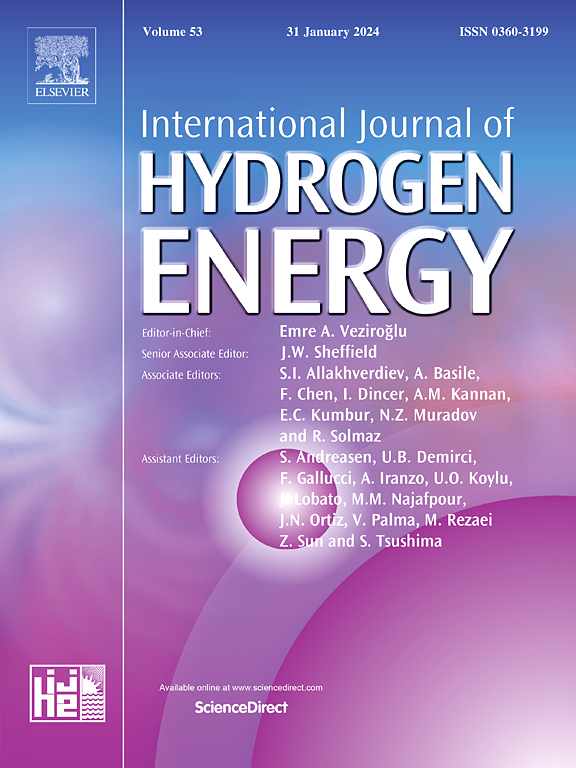Nb and Ta co-substitution in Bi0.5Sr0.5FeO3−δ cathodes for IT-SOFCs: Performance insights
IF 8.1
2区 工程技术
Q1 CHEMISTRY, PHYSICAL
引用次数: 0
Abstract
This study explores the development of advanced cathode materials for intermediate-temperature solid oxide fuel cells (IT-SOFCs) through the co-substitution of niobium ( and tantalum () at the B site in the perovskite structure. Both and were selected for their identical ionic radii and stable high valence state, which contribute to structural stability, while difference in electronegativity enhances oxidation reduction reaction (ORR) kinetics. The materials were synthesized via a solid-state reaction route. X-ray diffraction (XRD) and X-ray photoelectron spectroscopy (XPS) analyses confirmed the formation of a pure cubic phase and high-concentration vacancy in . Branauer-Emitter-Teller (BET) surface area analysis indicated that exhibited highest surface area, enhancing oxygen absorption. Scanning electron microscopy (SEM) revealed excellent adhesion between the cathode, anode and electrolyte materials. The symmetrical cell demonstrated low polarization resistance at , indicating superior electrochemical performance. A single anode-supported cell achieved a peak power density of and the current density with of and co-substitution in the under dry Surpassing the performance of individually substituted .and materials. Furthermore, the Distribution of Relaxation Time (DRT) analysis provides detailed insight into the electrochemical process across various frequencies. These findings highlight the potential of as a high-efficiency cathode material for SOFCs applications, promising a significant advancement in energy conversion technologies.

求助全文
约1分钟内获得全文
求助全文
来源期刊

International Journal of Hydrogen Energy
工程技术-环境科学
CiteScore
13.50
自引率
25.00%
发文量
3502
审稿时长
60 days
期刊介绍:
The objective of the International Journal of Hydrogen Energy is to facilitate the exchange of new ideas, technological advancements, and research findings in the field of Hydrogen Energy among scientists and engineers worldwide. This journal showcases original research, both analytical and experimental, covering various aspects of Hydrogen Energy. These include production, storage, transmission, utilization, enabling technologies, environmental impact, economic considerations, and global perspectives on hydrogen and its carriers such as NH3, CH4, alcohols, etc.
The utilization aspect encompasses various methods such as thermochemical (combustion), photochemical, electrochemical (fuel cells), and nuclear conversion of hydrogen, hydrogen isotopes, and hydrogen carriers into thermal, mechanical, and electrical energies. The applications of these energies can be found in transportation (including aerospace), industrial, commercial, and residential sectors.
 求助内容:
求助内容: 应助结果提醒方式:
应助结果提醒方式:


